Perspective
Perspective is the next generation visualization system for industrial applications, optimized specifically for mobile devices. Perspective puts the power of your plant floor in the palm of your hand by empowering you to create beautiful, mobile-responsive industrial applications that run natively on any mobile device and web browser. The Perspective module has full HMI and SCADA capabilities and marks the beginning of truly mobile-optimized, touch-responsive, easily accessible applications for monitoring, control, analysis and data gathering in industrial systems.
Perspective sits within the existing Ignition architecture so it can take advantage of our years of development and work flawlessly with external databases, PLCs, reports, and so forth. It was designed from the ground up as a means to deliver first-class mobile responsive applications and offer a browser-based design environment.
The following are some key features of the Perspective module:
- Responsive Design - Perspective is mobile responsive so it responds to changes in screen size and orientation, giving users a personalized view into their processes that are automatically optimized for whatever device they are on.
- Browser-based - Perspective lives in a browser instead of a Java client. No mobile module is required.
- Device Compatibility - Designers can create applications that run on any device that can support a modern web browser using any major operating system: Windows, macOS, and Linux. The native App runs on both iOS and Android devices.
- Designed for Touch - Perspective employs multi-touch technology to work with touchpad and touch-screen interfaces allowing users to utilize commonly used gestures such as pinching, panning, zooming, and scrolling.
- Sensor Information - Perspective is able to take advantage of cameras and GPS information that are natively provided by mobile devices.
- Cascading Style Sheets HTML5/CSS3 technology - Enables users to control their application on any device type such as smartphones, tablets, touchscreens, laptops, and desktop computers.
- Transforms - Let you easily take the value coming into a binding, manipulate it even further, and then transform it to the output of your choice.
Views and Containers
Views and Containers are an integral part of the Perspective design experience because they work together to create your HMI screens, which are the windows into your application. The View is the primary unit of design and the Container provides a way of laying out and organizing child components within a View.
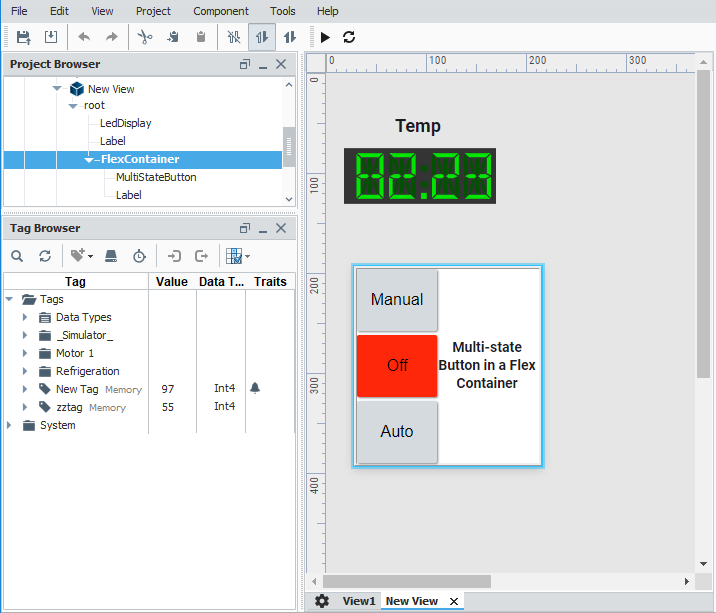
Components
Components are what give you flexibility in designing HMI and SCADA that reflect your company's design and your site's layout. Components are the widgets you deal with every day: buttons, text areas, dropdowns, charts, gauges, linear displays, and so on. The Perspective module comes with a host of built-in components that you can select from for use in your project. There are many ways to manipulate and arrange components when working in the Designer.
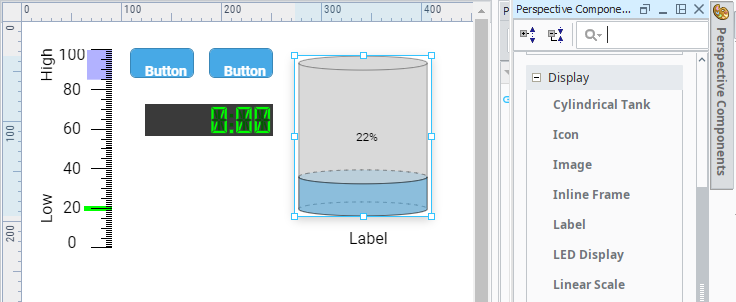
Perspective Symbols

Bindings
A binding is a mechanism that allows a property on a component to change based on a change to a value elsewhere in Ignition. For example, with binding, the liquid level displayed in a tank graphic can be bound to the realtime liquid level in a tank. The value of a Tag could be bound to a linear scale, a meter, or a label on your window. The power of bindings comes from the variety of binding types.
Click on the following links for complete information about binding types:
- Tag - Binds a property directly to a Tag, which sets up a Tag subscription for that Tag.
- Property - Binds one property to another.
- Expression - A powerful type of property binding that uses simple expression language to calculate a value.
- Expression Structure - A property binding that uses the property structure to pass data.
- Query - A polling binding type that runs a structured Query against database connections.
- Tag History - Used for dataset type properties. It runs a query against the Tag Historian.
- HTTP - Used for passing data directly to and from a URL link.
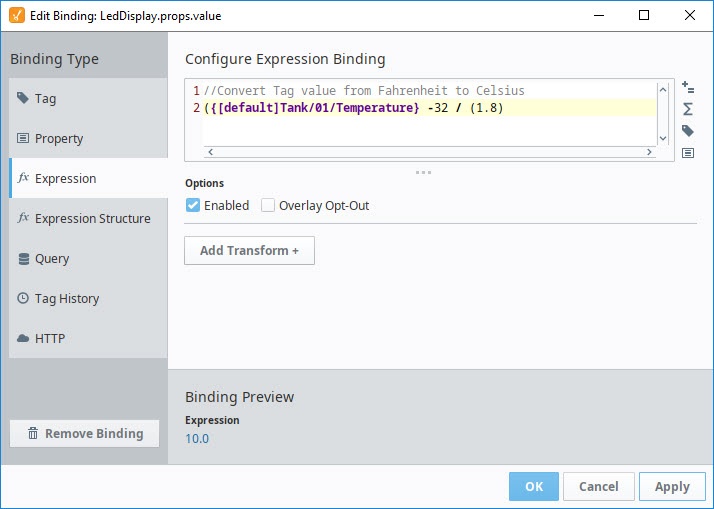
Styles and Style Classes
Perspective gives you the power to style your project in just about any way and easily edit styles across your entire project instantly. You can use powerful and flexible CSS3 styles to change the appearance and position of anything in your application. By combining styles into themes, you'll be able to apply and edit styles across multiple applications in an instant.
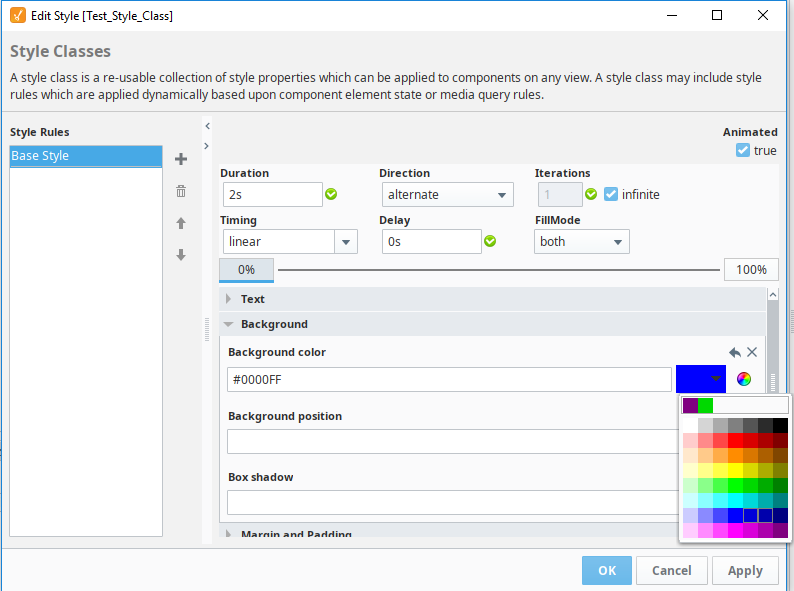
Security in Perspective
Perspective’s approach to security covers a wide array of topics, including authentication, authorization and permission modeling, and transport layer security (TLS).
- Uses single sign-on (SSO) with existing corporate credentials to get access to all of your assigned accounts and applications in one place.
- Clients launched from the Perspective module are secured using cutting-edge encrypting technologies and communication protocols to provide the most secure web-based data transfer.
- Strongly enforced “guest mode” access to prevent against unauthorized writes on the Gateway.
- Integrates with existing corporate identity infrastructure that uses two-factor authentication to verify the identity of users, thus adding extra protection against phishing and brute-force attacks.
- Ignition now has security Levels (instead of/similar to Roles) that are assigned to users. This makes defining permissions simple. The hierarchy of security levels can be used to simplify the security settings, because users with more specific security levels also “inherit” the more general security levels (i.e., a user granted the security level of “Operator / LineB” also has the securitylevel of “Operator”).
- Ignition can now use popular authentication methods in addition to Active Directory. It uses trusted federated identity technologies such as SAML, OAuth, OpenID, and others.
For more information, see Security in Perspective.
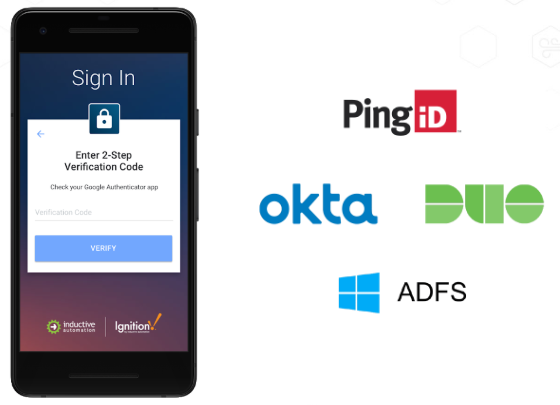
Perspective Co-Branding
You can read more about Perspective Co-Branding here.
